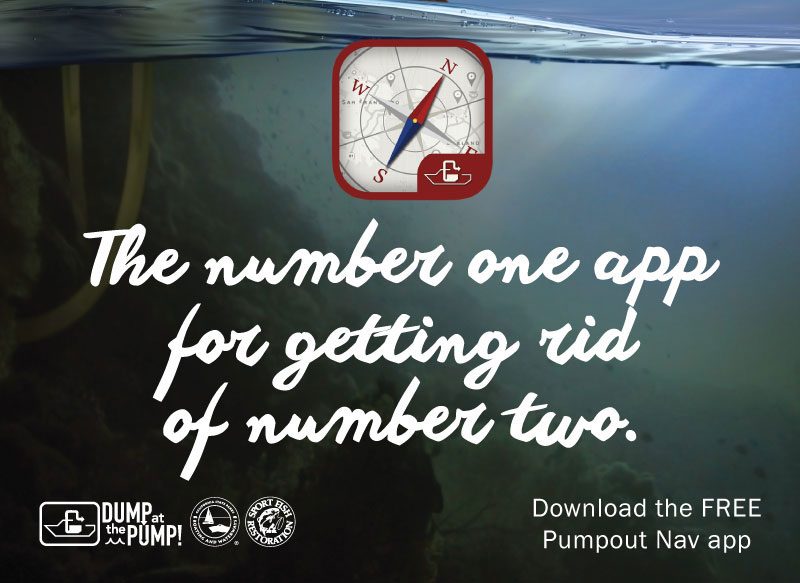
Navigating a Gale, and Darkness, in California
As we reported on Monday, the Golden State is at the bitter, ugly end of its now-endemic fire season, and grappling with the realities of its “new normal.” As of yesterday, California was still under states of emergency as rumors of another “wind event,” which can instantly spark terrible fires, echoed through the news and a nervous Bay Area population. While there is a little breeze today, the skies in the East Bay — where we’ve sought refuge from the power blackouts — are mostly clear of smoke. The worst seems to be over, for now, though life is nowhere near back to normal, whatever normal may be.
Ever since a gale blasted through Northern California early Sunday morning, life has been a little scary in pockets of the Bay — and also just plain inconvenient. Much of Marin County, which is home to the Latitude offices and most of the staff, was without power since the early hours of Sunday morning (though it now looks as if power has largely been restored). What might seem like trivial matters — no refrigeration, internet or ability to charge devices — can become grindingly vexing.
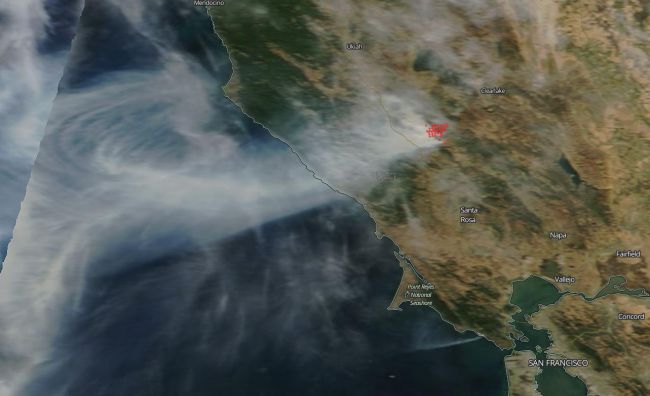
There are the statistics of these disasters: The number of acres burned, the number of people evacuated or without power, and the losses to businesses affected by both the catastrophic and the inconvenient. But then there’s the effect it has on your mind and your life, a measurable toll in people’s anxiety, fear and frustration.
The word apocalyptic is common when Californians talk about their situations. The atmosphere is dark — figuratively and literally. (Admittedly, effects from fires and power outages are so compartmentalized that in a town just a few miles away, life might seem completely ‘normal’.) We’re sure that it’s the same for people living through hurricane, typhoon and tornado seasons; you probably just hope that this year, it won’t be too bad, that it comes and goes quickly, and that you and your property escape it unscathed.
The current state that California finds itself in — which now spans its last three wildfire-ridden autumns — is a bit beyond the scope of this magazine, other than perhaps a few analogies, and reporting on the extreme nature of Sunday’s gale. The Bay Area is no stranger to big breeze, but Sunday’s wind was extraordinary, and had a wickedness and ‘grip’ rarely seen. There were “hurricane-strength” gusts of more than 90 miles an hour.
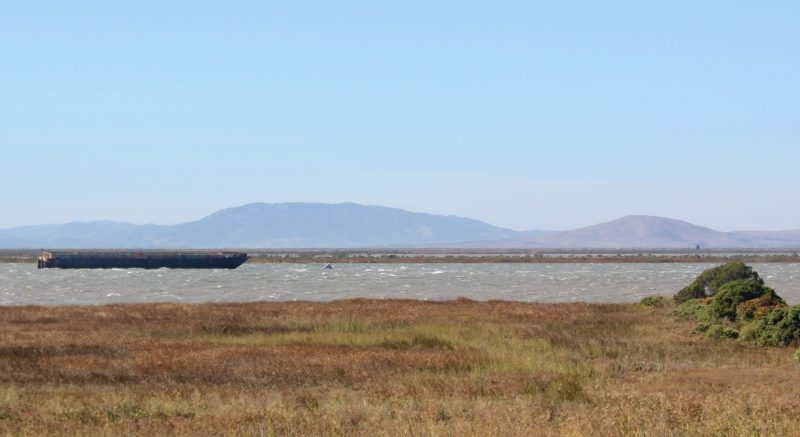
“Northern California was battered Sunday by extreme Diablo winds,” The Los Angeles Times reported. “The National Weather Service clocked a gust of 96 mph in the Mayacamas Mountains northeast of Healdsburg, which is threatened by the 54,000-acre Kincade fire,” which started a few days before the gale hit. On what is currently California’s biggest blaze, firefighters did extraordinary work to keep the Kincade fire under some semblance of control as the winds raged and mercilessly fanned the flames.
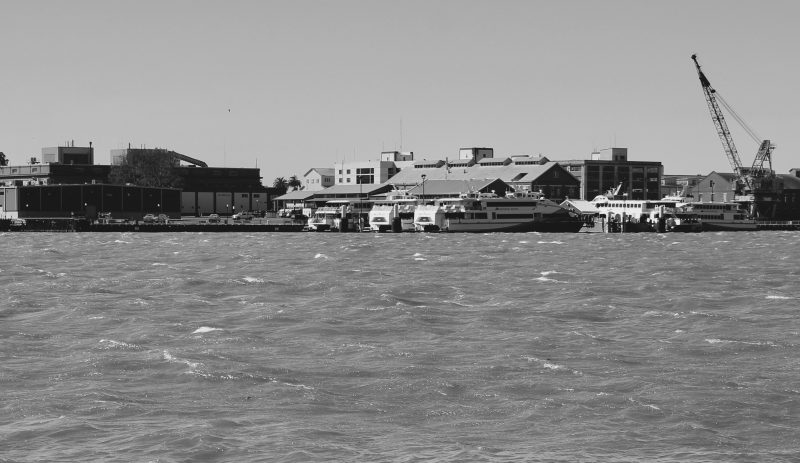
I was driving back from a blacked-out Napa to Marin on Sunday, and there was just enough internet trickling into a friend’s phone to announce that there was a fire in Vallejo. “Twin fires — one in Vallejo and the other just across the Carquinez Strait in Crockett — erupted Sunday morning, causing evacuations in the two counties and shutting down Interstate 80 and the Carquinez Bridge,” the San Francisco Chronicle reported.
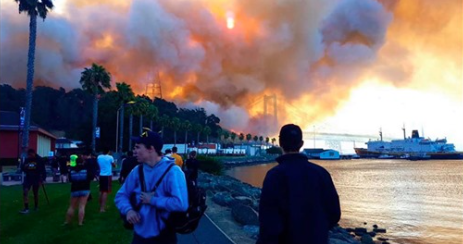
Cal Maritime Academy was evacuated as the fire, which is still considered active but largely contained, crept onto the easternmost corner of the campus. “All cadets, staff and faculty were evacuated safely,” Pete Steyn, a Cal Maritime IT employee, told us.
Steyn’s fiancée is the second engineer on the training ship Golden Bear, which is doing watches “with a skeleton crew at the moment to try to keep the amount of people on campus minimal,” Steyn added. “We are hoping to reopen campus on November 4 after all buildings have been declared safe. The only building we lost was the auto shop and a few cadet vehicles, a few sailboats and few campus vehicles.”
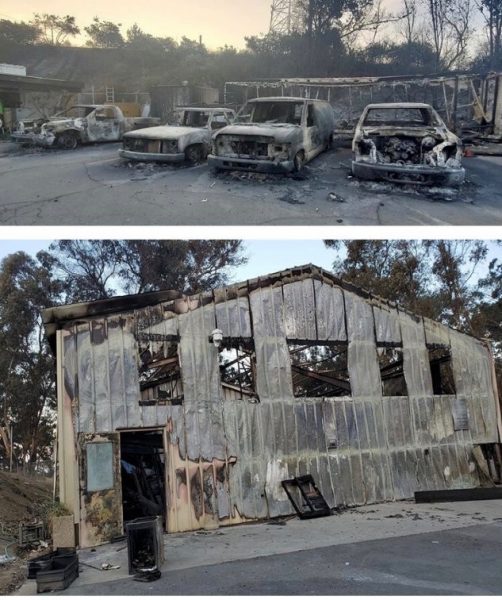
Chris Carranza, who’s a student worker in the IT department an engineering cadet at Cal Maritime, said on his Facebook page that when he evacuated from Glen Cove, “we were under the impression that our house was going to burn down.”
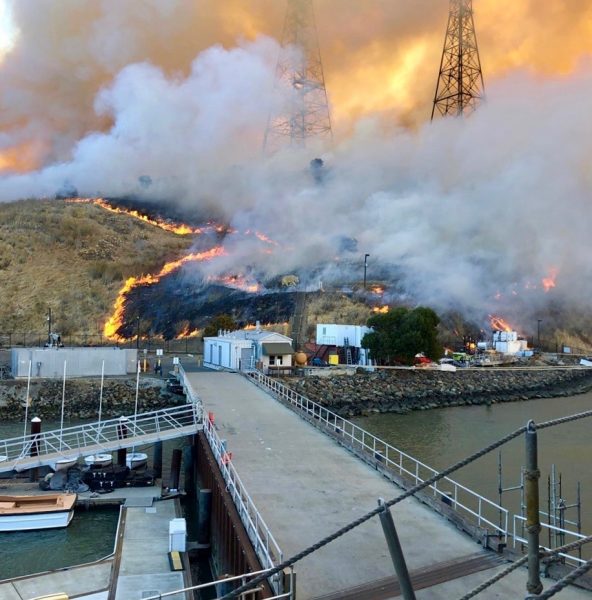
It is difficult to quantify the pervasive worry from these last few Octobers, when the moist Pacific sea breeze has fizzled out and California is parched and dusty. We can’t imagine the tragedy that some people have lived through, nor the fear and uncertainly of being forced to evacuate.
With I-80 shut down on Sunday, I found myself anxious to drive on Highway 37, which is a narrow and at times one-lane road that skirts the rim of San Pablo Bay and passes through the bone-dry fields of western Napa County. “What could possibly go wrong?” I joked to myself. There was no internet and no way to check the traffic, and I worried that my car, which is getting old, would break down. Like a sailboat with no wind and far away from port, I had to rely on my engine.
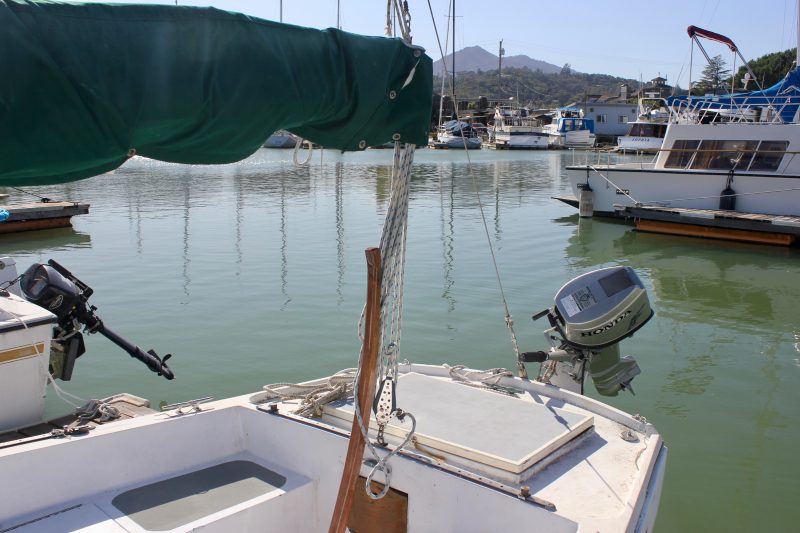
Everything in Marin was closed due to the blackouts. There were no groceries or gas, and refrigerators went warm after a while. You roll with it at first, and when annoyed and bored, you remind yourself how lucky you are compared to people not far away. But at some point, life has to go on, and you have to get back to work.
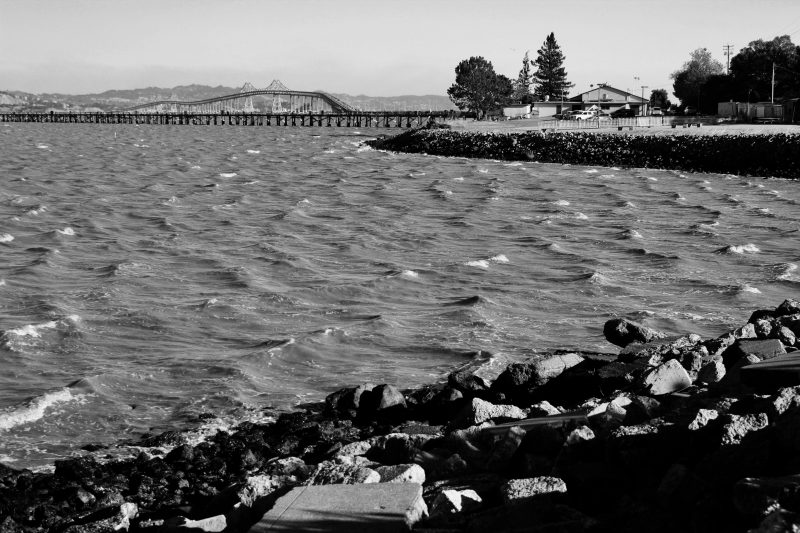
Everyone asks if this is California’s “new normal.” Some context: There have actually been fewer fires this year, so far, than in the previous two. As of October 4, 2019, there were “41,074 wildfires compared with 47,853 wildfires in the same period in 2018,” according to the Insurance Information Institute, or III. (There were 71,499 wildfires in 2017.) The III said California is by far the number-one state vulnerable to extreme wildfires, with 2,019,800 properties at risk. Texas, the number-two state at risk, has 717,800 vulnerable properties.
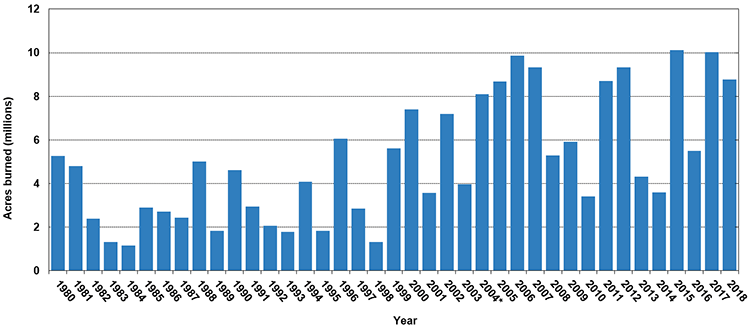
On Sunday, I forgot to grab my one and only flashlight while at the boat, so I rode my bike back into town. The occasional leaf hit me in the face with a sharp sting. My bike and I were pure windage. Throughout town, I heard the occasional high-rpm, lawn-mower-like rattle of generators and the smell of gas.
Riding through an empty San Rafael, which is otherwise always busy on the weekend, was eerie and unnerving — quite simply, apocalyptic. The only place open was Terrapin Crossroads, which had a big generator running to power the band, a TV showing the World Series, and the machine that charges your card. All beers were in cans.
Not to fear, Latitude Nation, there are oases in the apocalypse, and they serve $8 12-ounce cans of IPA. Be sure to bring your debit card to the end of times.
Epilogue
There is, blessedly, rain in the Bay Area’s forecast. We are holding our breath.

This story has been updated.
Complex Weather Affects Transat Jacques Vabre
IMOCA 60 Division
Just over three days into the 14th edition of the Transat Jacques Vabre — a 4,350 mile doublehanded sailing race from Le Havre, France, to Salvador de Bahia, Brazil — Kevin Escoffier and Nicolas Lunven onboard PRB are leading the IMOCA 60 fleet. As of this writing, the orange boat is just barely at the front of the southerly lead pack of boats making good progress down the Portuguese coast.
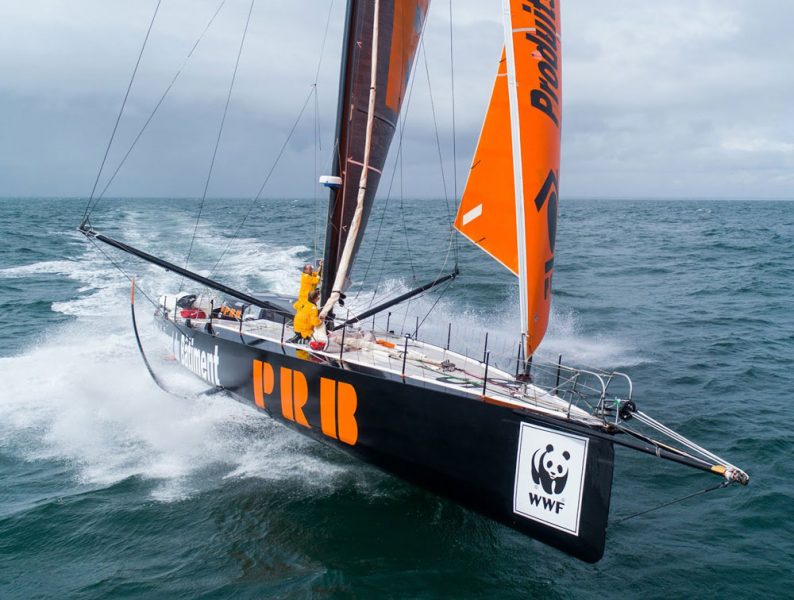
A massive split has opened up among the record-setting fleet of 29 IMOCA 60s — up from just 13 two years ago. The other, smaller pack of boats has committed hard to a westerly option that is beginning to look less and less likely to deliver the goods. Among the boats out west is Alex Thomson and Neal McDonald’s revolutionary new crowd favorite Hugo Boss and Boris Hermann and Will Harris’s Malizia II, which famously carried young Swedish climate activist Greta Thunberg across the Atlantic recently.
The massive split among the fleet is indicative of an incredibly complex weather scenario. The fleet departed Le Havre and sailed 15 miles upwind to a turning mark before racing downwind in a building northeasterly that took them west through the English Channel and into open water. Upon reaching the Atlantic Ocean, the fleet had to negotiate an autumn low-pressure system and its southerly headwinds, which split the fleet. With each passing hour, the ‘safe’ money bet of heading south down the Iberian coast is looking better and better.
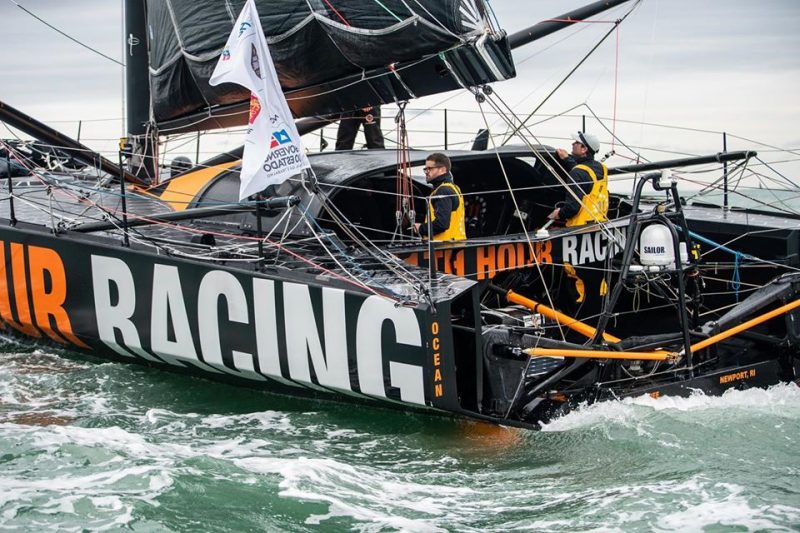
Behind Escoffier and Lunven on PRB is 11th Hour Racing, a nearly 10-year-old boat that has been constantly refined and only recently modified with lifting foils. Sailing in only their second race since acquiring the IMOCA 60 formerly known as Hugo Boss, Ocean Race skipper Charlie Enright of Newport, Rhode Island, and co-skipper Pascal Bidégorry remain in contention for a solid result. They’re currently in sixth place. Pre-race favorites Jérémie Beyou and Christopher Pratt on the radical new Charal are currently in third.
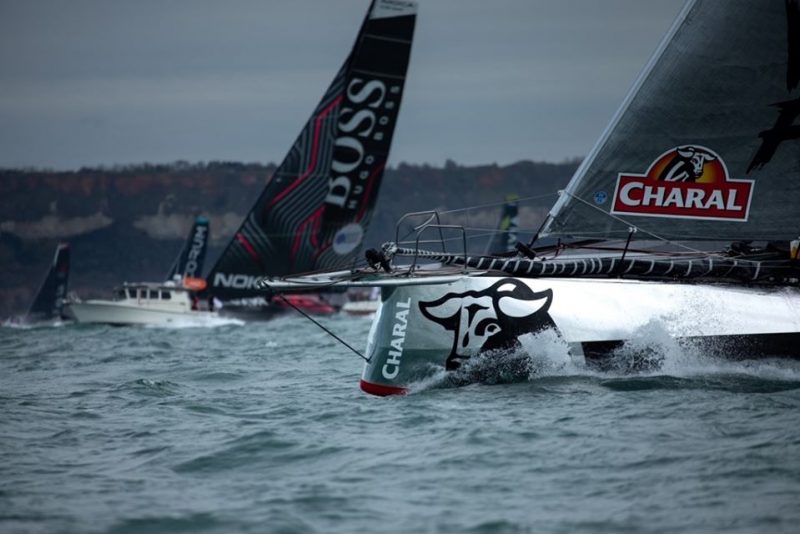
Class 40 Division
Behind the leading IMOCA 60s is an impressive fleet of Class 40s, which started at 27 boats but has already seen some heavy attrition. Early race leaders Luke Berry and co-skipper Tanguy Le Turquais onboard Lamotte – Module Creation dismasted on the second morning of the race. Shortly thereafter, multiple other boats made their way back toward the coast with an ever-growing list of carnage including ripped-up spinnakers, broken autopilots and electronics, and even a couple of minor injuries.
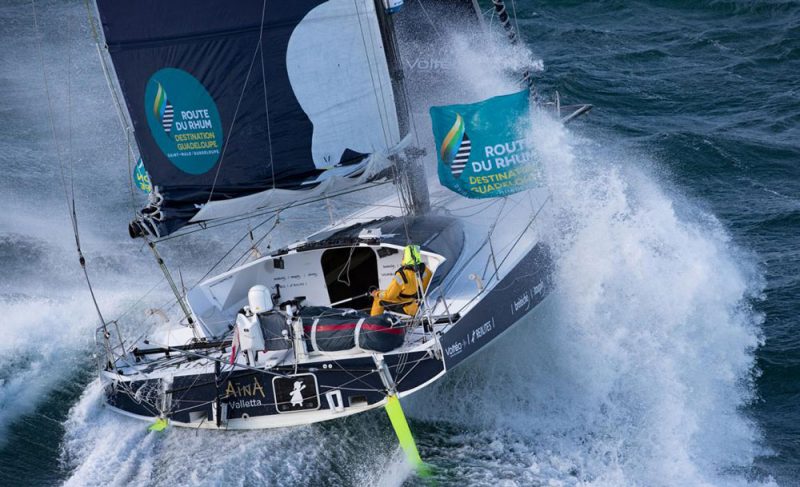
Multi 50 Division
Just out in front of the IMOCA fleet is a small group of three Multi 50 trimarans, still tightly grouped and leading the charge toward the trade winds.The Transat Jacques Vabre is still in its early stages, and we’ll continue to update this race, as well as multiple other transatlantic races that are currently or soon to be underway.
Free Pumpout Nav App
No Shortage of Races in November
Isn’t the yacht racing season over yet? Neeeeever! We carry on into November with the following:
The California Dreamin’ Match Race Series wraps up this weekend with Stop #3 at Long Beach Yacht Club.
The final event on Latitude 38’s Unofficial Women’s Circuit will be raced this Sunday. Richmond YC will host the Amazing Grace Cheney Cup for women skippers. Following that regatta, we invite nominations for the 2019 Queen of the Women’s Circuit. Send us your choice by November 12.
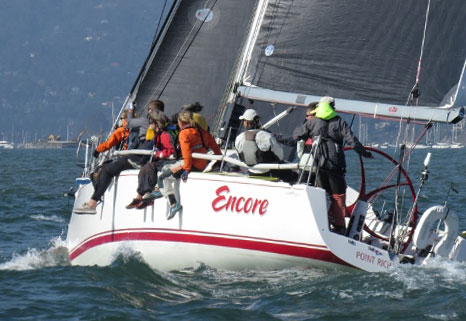
Turkey Races
Races with a “turkey” theme in November include:
- Nov. 2 — Turkey Shoot, hosted by Lake Washington Sailing Club in West Sacramento.
- Nov. 23 — Turkey Cup on Clear Lake, hosted by Konocti Bay Sailing Club. The winner gets a turkey, second-place a chicken and third a Cornish hen.
- Nov. 23-24 — Turkey Day Regatta in Long Beach, hosted by Alamitos Bay YC.
- Nov. 29 — Wild Turkey Race out of Tiburon YC on Black Friday.
Midwinter Series
Several midwinter series kick off this weekend. Racing on Saturday — in alphabetical order — are:
- Benicia YC’s Frostbite Series.
- Golden Gate YC’s Manuel Fagundes Seaweed Soup Regatta.
- Encinal YC’s Jack Frost, racing west of the Berkeley Pier. The hope is for two races a day.
- Vallejo YC’s Tiny Robbins Midwinter Series.
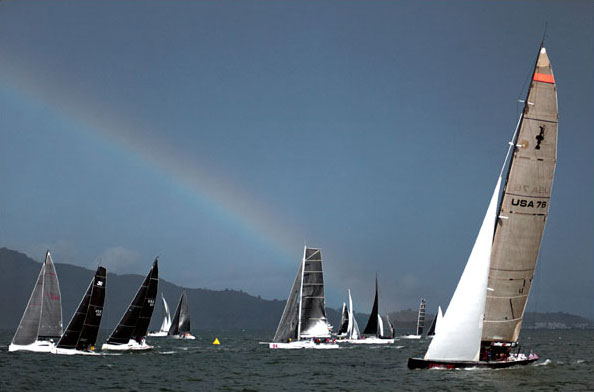
Elkhorn YC’s Chowder Cup will sail the third of three races on Saturday. The club invites spectators to join them at the end of the north harbor jetty in scenic Moss Landing around 2 p.m. to watch the finish of the pursuit race.
The Perry Cup will start on Saturday-Sunday, November 2-3. Monterey Peninsula YC hosts the Mercury fleet.
Sausalito YC’s Chili Midwinter Series starts on Sunday, November 3. Then they’ll run the RegattaPRO Winter One-Design Invitational, kicking off on November 9. For info on both series, see www.sausalitoyachtclub.org.
San Diego YC’s three-part Hot Rum Series will run on November 9 and 23 and December 7.
In addition to weekly Sunday Chowder races, Berkeley YC offers two separate series of Midwinters on the second weekends of November through February. (If you sign up for both you’ll get a discount.)
Sequoia YC invites sailors to “head south for the winter!” They offer “two series to choose from and a warm fireplace in the club when you’re done.” First up is the Winter Series, beginning on November 9. Then, starting on November 23, the Redwood Cup is a “fun pursuit series, so you can maximize your time racing,” says race captain Davis King. “We start in the turning basin and can often set spinnakers in the channel. It has the simplicity of the Sunset Series but with less wind in the winter, so it’s ideal for training new crew, bringing family out, or close racing in light air.” Register for either or both on Jibeset.
Island YC’s Island Days series kicks off on Sunday, November 10, with sailing on the Estuary out of Alameda.
Santa Cruz YC’s Midwinter Series will begin on November 16.
South Beach Yacht Club has brought back the five-race It Ain’t Over Till It’s Over series, scheduled for the third Saturday of the month from November through March on the south and central waters of San Francisco Bay. SBYC invites racers back to the club post-race for no-host bar and food. SBYC most recently called this series Island Fever. “Rear Commodore Andrew Lorenzen discovered a trophy lying on the shelves at SBYC,” explains Patti Mangan. “It appears this was the original name of our Midwinters in the ’90s and somewhere along the line the name changed.” The trophy bears inscriptions from 1992 to 1999.
Believe it or not, there’s more. As usual, we don’t have room here to list all the races available. For more, see our November Calendar, coming out in the magazine this Friday, November 1. We’ll update the online version that afternoon.
Your Just Rewards
Did you race with the YRA this year? If so, the YRA hopes you’ll join them on Sunday, November 17, from 1 to 3:30 p.m., at Berkeley YC for the Trophy Party. As well as stopping in to pick up your swag, we encourage you to stick around, cheer for series winners, and hear updates and inspiration from YRA board members and MC John Arndt, publisher of Latitude 38. The racing editor will be there to take pictures of winners. Pupus will be served, and BYC will sell drinks at the bar.
Test Your Savvy with the Great Pumpkin Quiz
After a glorious day of racing on Saturday in brisk westerlies, gale warnings shut out the Great Pumpkin Regatta on Sunday. A northerly gale howled in overnight. Folks packing their boats away on Sunday struggled to remove sails in the powerful gusts. Fortunately, the power stayed on at Richmond Yacht Club, and scores of sailors there for the weekend gathered that morning to enjoy breakfast and a Nautical Trivia Quiz.
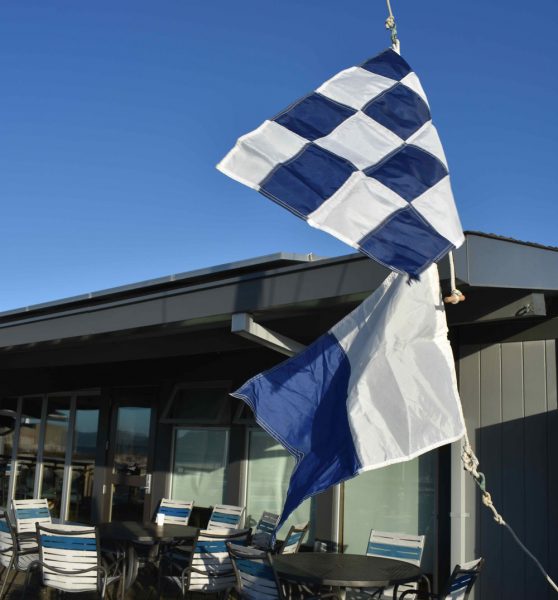
We’ll have detailed coverage of the Great Pumpkin Regatta in the December issue of Latitude 38. For today, we invite you to match wits with the best minds at RYC and see if you can achieve a perfect score on the Trivia Quiz. No fair consulting the internet or even your bookshelves! That would be cheating.
“Our Nautical Quiz is intended to entertain, inform, educate and amuse,” reads the introduction. “It has been 230 years since the “Mutiny on the Bounty”, 75 years since D-Day, and 25 years since Bill Koch announced an all womens’ America’s Cup team and this was the fifth year of the R2AK. We hope you will enjoy the thinking process. All the answers are available on the internet but what is the fun in finding the answers that way.” (Spelling, typos and punctuation are sic.)
The 10-Question Quiz
The “New Zealand National Institute of Weather and Atmospheric Research” scientist Petra Pierce is now studying old square rigged sailing ships “log books” to harvest information from the 1600’s, 1700’s and any sailing navigator observations from all over the world. These may be the oldest reliable weather data and observations of the worlds oceans recorded. New Zealand is studying old weather data because?
A. New Zealand has the America’s Cup
B. ‘Games of Thrones’ filming starts in New Zealand
C. Wine industry and Agriculture industry info
D. Climate Change Modeling
Many of Tracy Edwards’ Maiden’s all women’s crew from the 1989-90 campaign went on to various sailing adventures in history. Tracy’s team may not have been the most experienced beginning the race but where at the finish line. They won two of the legs. Three women went on to crew on attempts to set sailing course records around the world. Two went on to participate in many other big races and one woman went on to sail another Whitbread and two America’s Cup campaigns, winning one of them. Who was this amazing women sailor?
A. Melissa Purdy-Tiburon
B. Dawn Riley-Detroit
C. Amanda Swan-New Zealand
D. Nancy Hill-New York
This man sailed on HMS “Endeavour” with Captain Cook in 1768, as a botanist and naturalist. We was very wealthy man. Charles Darwin learned from him. He discovered and named the “Bougainvillea”, was president of the Royal Society and recommended to the British Admiralty to commission Captain Bligh to sail HMS “Bounty” to Tahiti in an effort to collect and transport breadfruit to the Caribbean Islands. His name is on a Caribbean Blended Rum. Who was this first naturalist?
A. Joseph Banks
B. Captain Morgan
C. John Jamison
D. Norman Collins
We know where the “King”, “Devil” and “Garboard” planks are located on a wood built boat. We know why they call a particular plank the “Shutter Plank”. What is the “Whiskey Plank”?
A. The wood under the whisky bottle.
B. The bed under a drunken sailor.
C. The last plank secured to the boat.
E. Transoms top plank.
Tim Crockett, a Special Forces veteran, and three of his friends, while drinking in a bar in England, conceived of a fund raising way to support organizations to help returning veterans from the Middle-East wars with mental health issues and suicide. After his three friends backed-out he rowed solo in the Talisker Whisky Atlantic Rowing Challenge. His boat was named “Tame the Kraken”. He finished the 3200 miles in 63 days and generated $200,000 for supporting USA and British organizations. Where does the name “Kraken” come from?
A. Name of the Bar in England
B. Name of the Black Spiced Rum they were drinking
C. ‘Norse Sea Monster’ that sinks ships
D. The Knarr that won the 2018-2019 Golden Gate Winter Series
This 1634 invention was used on almost all sailing ships and to this day is still in use as one of the tools used by any good mariner. But it was not until 1947, after the second world war that it was used by racing sailboat navigators to pick the best course to sail between Los Angeles and Hawaii during the Trans Pacific Yacht Race. What was this invention?
A. Slide rule
B. Barometer
C. Sextant
D. Stopwatch
During the naval battles of the “Eighty Years War” between Catholic Spain and Prodestant Netherlands this 1608 invention played a key role in the diplomatic truce of 1609 called the “Twelve Years Truce”. The Spanish navy commander did not want to continue fighting when word got out about Hans Lipperhey’s idea. The patent office turned down this idea and it quickly became a novelty item for sale on the streets of Paris. Galileo started using this in his work. What was this 1608 invention originally discovered by accident in a clothing store?
A. Barometer
B. Water screw-propeller
C. Telescope
D. Military cartridge
In 1822 this man stepped off the British Whaling Ship ‘Orion’ onto foreign soil to find supplies for the ships’ crew but he was immediately detained by the Commandante of the Presidio. He was noticed and adored by Maria Antonia, daughter of the Commandante. He converted to Catholicism became a Mexican citizen and after he married Maria he taught carpentry, ship building, navigation, skippered schooners carrying lumber from the North Bay to the new town of Yerba Buena and was the first harbor master for the port of San Francisco. In 1835 he received a 19,500 acre Mexican land grant. To this day part of San Francisco Bay is named for him. Who was he?
A. Ygnacio Martinez
B. Bill Richardson
C. Corte Madera
D. General San Pablo
In the 2019 R2AK race from Port Townsend Washington to Ketchikan Ak, First Federal Teams Sail Like a Girl competed in a Melges 32. From the moment they started on their all human powered adventure the second time around they were predicted to be one of the front runners.
A. They won it in 2018
B. They were the only boat to sail through Seymour narrows on one tide change.
C. They had both paddle and pedal power on board.
D. Both A and C
In the 2017 Trans Pacific Yacht Race the “First to Finish” Barn Door Trophy was presented to the second boat to finish, the 100′ RIO. In 2019 this trophy was presented to 100′ Comanche, the real first to finish boat finishing both races. Why was Rio and Comanche switched for this recognition?
A. Comanche’s new Australian owner was bribed to enter
B. Rio’s owner had the boat “For Sale”
C. Rio did not use a swinging mechanical keel in 2017
D. Comanche did not used mechanical winches in 2019
We’ll post the answers in ‘Lectronic Latitude on Friday. The prize for the winner was a DVD copy of the Marlon Brando version of Mutiny on the Bounty (1962).

